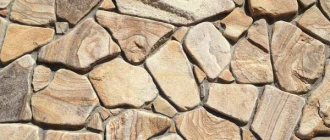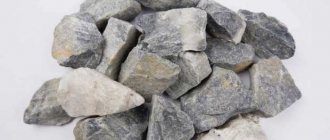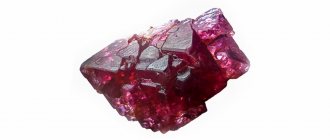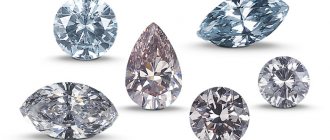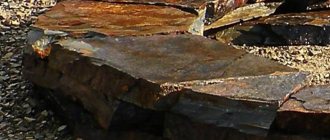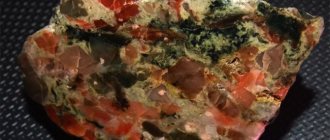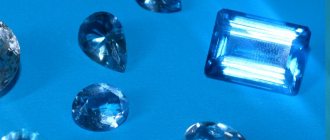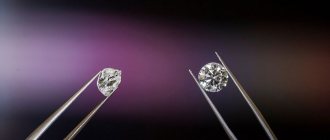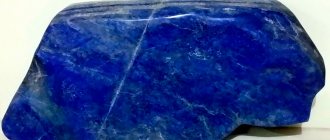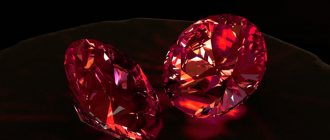Story
The fact that primitive man survived the confrontation with natural elements and predators is largely due to flint.
This pebble became the first tool for making fire; scrapers, drills, needles, and arrowheads were also made from it. Tribes leading a primitive way of life in the wilds of Africa or the Amazon still use them today.
Flint flint served as the “trigger” of firearms until the 19th century.
It is no coincidence that the name of the stone comes from the ancient Greek “kremnos”, which means “to burn”.
The millstones of hand and mechanical mills were also made of flint.
By hitting pebbles one against the other, you can create a spark. Modern children amuse themselves with them and tourists use them on occasion. They are part of a modern “survival kit”.
The role of flint in the life of ancient man
Man began to be called “reasonable” only after he learned to make various tools from scrap materials. Having once discovered flint, our ancestors tried to use their thin and sharp fragments. It didn’t take long before ancient man learned to select suitable silicon fragments and make the tools he needed from them.
Arrowheads, knives, spears, chisels - our ancestors made all this from flint. This is evidenced by numerous archaeological finds. Flint was widely used by humans until the Iron Age, which began around 1200 BC. In ancient times, the stone was also used to produce fire, and later - in weapons (for striking sparks).
By the way, with the help of a flint ax even today you can cut down a mature tree in just an hour and a half of hard work. And two pieces of this amazing stone will help you make a fire in the forest, if you suddenly don’t have a box of matches with you.
Description
Flint is an opaque rock, a type of quartz.
Color ranges from yellowish to black. Colors are determined by impurities (hematite, goethite, pyrite). Organic inclusions create black agglomerates.
Monochrome specimens are common; patterned or striped stones look exotic.
Typical flint is a fine-grained multicomponent formation of silica. Usually in limestone strata, it includes grains of quartz, chalcedony, and, less commonly, opal of microscopic dimensions. It is not uncommon to see zonal replacement of organic remains with stone. We are talking about corals and fossilized shells of extinct mollusks.
Is there an artificial analogue?
Flint refers to opal-chalcedony compounds with inclusions of opal impurities consisting of spheres of microscopic diameter.
The process of extracting opal from flint layers is labor-intensive and does not occur without the destruction of opal inclusions.
The gem is considered a rare and expensive stone, prone to destruction during polishing and cutting.
Therefore, technologies for making artificial opal balls have been developed; there is no point in counterfeiting flint - it is found everywhere.
Physico-chemical characteristics
To a chemist, the mineral flint is a silicate of sedimentary or volcanic origin. Its basic formula is simple, but such a variant is rare in nature. More often, the composition is complicated by impurities, of which the stone has plenty. They are “responsible” for the color and are indicated in the description.
| Rock type | Metamorphic rock |
| Mohs hardness of flint | 7 |
| Density | 2.6 g/cm3 |
| Color | The color is varied with a predominance of gray and dark gray tones. |
| Texture 2 | banded massive |
| Structure 2 | fine-grained |
| origin of name | from the Old Slavonic word “flint” - hard stone |
The strength and viscosity of agglomerates is a merit of the cryptocrystalline structure.
The peculiarity of flint is that it splits into thin plates with sharp, blade-like edges. It allows you to distinguish stone from imitation.
Colors and varieties
Considering the zone in which deposits of silicon rocks were found, it immediately becomes clear that the stones will differ sharply in their color.
The presence of impurities and proximity to other minerals affect the acquired shade, which can be light, gray, blue, light brown, black, dark brown, lilac, red, pink. At the same time, the appearance of the mineral is not always monochromatic; stripes and patterns of a different shade are easily visible on it.
The chemical composition of the mineral made it possible to conditionally distinguish 4 groups of this silicon rock:
- siliceous quartz;
- chalcedony quartz;
- chalcedony opal;
- opal.
Each type differs in chemical composition and physical properties, but in general remains an invariably durable, strong material.
Place of Birth
Flint is one of the most common rocks. There are deposits on all continents.
In addition to the island of Ruygen (near Germany), where the stone was first found, it is mined in Denmark, Poland, Kazakhstan, Belarus, Mongolia, Israel, and Great Britain.
In Russia, this is the north of the country: Karelia, Moscow region, Arkhangelsk, Belgorod, Tver regions.
Combination with other stones
Flint is a mineral of the Fire element, so it goes well with amber, hematite, cat's eye, carnelian and tiger's eye.
Flint has good compatibility with stones belonging to the elements of Earth and Air - chalcedony, malachite, turquoise, jasper, heliotrope, sardonyx, quartz, lapis lazuli, rock crystal.
Flint does not combine with minerals that are under the protection of the element of Water.
You should also be careful when combining flint with precious stones to avoid conflicts between energetics.
Areas of use
The very first use of flint in history was a device for making fire, scrapers, arrowheads, other tools and wars of Stone Age man.
Today, depending on the conditions, it is used by jewelers, stone-cutters, industrialists:
- The jewelry industry values chalcedony, jasper, and opals. These precious types of stone become jewelry inserts. There are also plenty of connoisseurs for black or spotted “pure” flint.
- Master stone-cutters cut candelabra, boxes, small plastic materials, and vases from colored materials. Black is used for exotic items such as “magic” pendants, stone knives or fire-making chairs.
- The rock is used to make slabs for countertops, fireplace, floor and panel slabs. This coating is valued for its minimal abrasion: flint is superior to granite in this parameter. For this reason it is in demand in public buildings, metro stations, and supermarkets.
The value of stone for other "practical" industries is also impressive. This is a raw material that increases the strength of non-ferrous and ferrous metallurgy products, an additive in concrete and other building mixtures.
Industrial uses of the mineral
Flint is of no interest to industrialists these days. This is a mineral that is used in the production of abrasives, ceramics, decorative items and jewelry. Sometimes it is included in raw materials for road construction.
Rare, unusual-looking specimens in pink, blue, lilac and red colors become collector's items. Connoisseurs are especially interested in a variety of rare color, the cross-section of which has a pattern. Beads are made from them, as well as artistic decor. Beads are used to make necklaces, bracelets and pendants, and they are used to decorate interior items.
Price
In the Russian segment of the Network there are jewelry, household items and collection material from various deposits of the planet (price/rub.):
- tumbling (1.5-3 cm; Poland) – 70-130;
- agate-shaped cabochon (20x30 mm, Moscow region) – 260-340;
- ball (53-58 mm, Madagascar) – 2,200 – 2,600;
- bracelet (jewelry alloy, Poland) – 2,340;
- black flint (cut, 12x12x3 mm, Moscow region) – 3,270.
The price of jewelry is affordable, since the frame is made of ordinary metals and alloys.
In what areas is flint used?
Currently, the stone is used in the following areas:
- Jewelry making. Jewelry is made from grade 1 flint: necklaces, rings, bracelets, earrings.
- Interior decoration. Buildings in big cities have floors made of silicon slabs. These stones, like granite, decorate walls and arches.
- Light industry. Buttons, cufflinks, and ceramic products are made from the mineral.
- Making various souvenirs. Boxes, figurines, and figurines made of minerals look impressive and unusual.
- Construction. Flint is found in various building materials. Often combined with limestone.
The ability of flint to produce sparks is used in the manufacture of lighters. Collectors also fell in love with unusual stones. There are large collections containing minerals of various colors and shapes.
Therapeutic effect
Flint is a traditional means of water purification. Even today they cover the bottom of wells and are sold for domestic use in homes with running water.
Along the way, the stone acts as an activator and structurer of water. That is, it releases its healing properties.
Healers claim that flint water heals all diseases and replaces soap.
It is recommended to drink water infused with black flints for fractures, bruises, and skin diseases. Or put pebbles on these places.
As a result, scratches, cuts, and other minor damage heal without a trace (that is, the formation of scars).
Even official medicine recognizes the usefulness of stone or water in destroying putrefactive microorganisms.
Popular beliefs about flint: 8 interesting facts
We have collected the most interesting and most curious facts about this stone. Here they are:
- In ancient times, our ancestors poured flint stones into wells. It was believed that in this way the quality of water could be significantly improved.
- In Ireland there is still a tradition of spraying a sick person with silicon water.
- In Brazil, flint is used to search for deposits of gold and other non-ferrous metals.
- Silicon mines of the Neolithic era have been preserved in many European countries - in England, Poland, Spain, Ukraine, Belarus and others.
- Many people treat migraines by tapping two flint stones against each other.
- American Indians widely use stone in their ritual rites.
- In medieval England, flint was hung in cattle pens to prevent cows from losing milk. This tradition has been preserved in some places to this day.
- In Scandinavian countries, a silicon knife cut with silver was considered a powerful amulet for family and clan.
Magic properties
The main magical property of flint is the concentration of human powers:
- A common attribute of magical rituals is a knife with a flint blade.
- It is recommended to buy a stone for a person who wants to increase willpower, become braver, more collected, and more purposeful.
Contemplation of a flint ball or pyramid calms the nerves and can attract a brilliant idea.
Raw flint is chosen as a home or office amulet. His magic neutralizes negative energy.
Price and secrets of care
Buying flint is available to people with any budget. To purchase natural specimens of fantasy colors weighing 10 g, you will only need 2 dollars.
For a set of fine-grained stones (150 g) to activate water, you will have to pay 200-300 rubles.
A small bag of flint pebbles for cleaning a well with water will cost 1000 rubles for 10 kg of stone raw materials.
Like any decoration, a talisman with flint requires certain rules of care:
- To clean under running cool water, use a soft brush;
- The cleaned pebble must be wiped dry immediately;
- It is forbidden to use detergents, boil stones, wash with hot water, or hold over steam;
- For drying , choose a dark place with good ventilation;
- stored in a separate box, away from other jewelry.
Rat figurine from Flint - the perfect figurine for 2021
In everyday life, crafts made with flint complement everyday clothing of ethnic or classic style, so that the pendant or pendant matches the chosen image.
A particularly durable mineral does not have to be worn on one’s person; specimens with a bizarre interweaving of multi-colored veins can be stored on a shelf next to other gems.
Who is suitable according to the Zodiac
Flint is suitable for absolutely all zodiac signs. If you carry this mineral with you as a talisman, it can charge its owner with positive energy.
Thanks to the power of the stone, Gemini and Aries will become more purposeful. Cancer, Virgo and Libra will celebrate inner peace and emotional stability.
Aquarians will feel courage and strength, and will be able to cope with any difficulties in life.
Pisces are not recommended to wear flint, as their energies can conflict with each other. But if Pisces is “drawn” to the stone, then there will be no problems.
The stone has an extremely positive effect on doctors, lawyers, teachers, politicians and businessmen. He helps them achieve their goals and stand on their own two feet.
Where is flint rock mined?
The formation of flint occurred at the bottom of sea reservoirs, where various types of sedimentary rocks were impregnated with precipitated silicon gel.
Therefore, the mineral cannot be called rare; it can be found on any continent in the thickness of sedimentary rocks.
The most ancient deposits include the German island of Rügen, where flint was first discovered.
- Russia is famous for its rich deposits of silicon rocks - deposits in the Moscow region, Tver, and Belgorod region.
- Kazakhstan mines stones of fantastic colors - bright red and lilac-pink specimens.
- In Belarus , Israel, the USA, as well as Mongolia and Denmark, blocks of black or dark gray silica are found.
Mineral deposits form veins and layers with many crystals; they can be combined into a dome; individual blocks have an irregular shape with smoothed edges.
If in ancient times flint was beaten with a particularly strong stone to give shape, modern processing is carried out with corundum attachments followed by the use of grinders.
The stone is polished according to special rules so that it does not crack from overheating.
